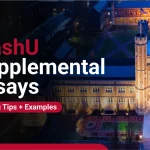Looking to become a doctor without going broke? You’ve come to the right place! Finding the cheapest medical schools is a turning point for aspiring doctors like you who want a high-quality education without the hefty price tag.
The cost of medical school depends on the institution and its location. According to the Association of American Medical Colleges (AAMC) report, tuition for the Class of 2023 averages $268,476 at public schools and $363,836 at private schools. This is why it is advantageous to gain admission to an affordable school.
Continue reading to learn about the top 20 cheapest medical schools in the U.S., how they can benefit you, how to get into one of these schools while staying on budget, and tips on getting into an affordable medical school.
- What Are the Top 20 Cheapest Medical Schools?
- Benefits of Going to the Most Affordable Medical Schools
- Tips for Getting into a Cheap Medical School
- Why Are the Easiest Medical Schools a Good Choice?
- Frequently Asked Questions
- Takeaways

What Are the Top 20 Cheapest Medical Schools?
Medical schools are known for their steep tuition fees, but not all of them have to drain your savings. The cheapest medical schools offer affordable tuition while still providing excellent training. Choosing one of these schools can help you focus on your studies without the constant worry of mounting student debt.
According to the AAMC report, 71% of medical students graduate with debt, and 84% of those owe at least $100,000 or more. Even more striking, one in five graduates faces debt over $300,000. It can be a serious financial challenge, which is why choosing one of the cheapest medical schools can be a smart and practical option for you. A more affordable path means less stress and more focus on your future as a doctor.
Inexpensive medical schools are also beneficial because they offer the same degrees as pricier institutions but at a fraction of the cost. This is great news for anyone who wants to become a doctor while staying financially savvy.
Let’s check out a list of the top 20 cheapest medical schools in the U.S. for both in-state students and out-of-state students, which combine quality education with affordability:
The cheapest medical schools for in-state students
In-state students are those who attend medical schools within their home state. They benefit from reduced tuition rates compared to out-of-state applicants. Below is a table showcasing the top 20 cheapest medical schools for in-state students.
| School | Lowest annual tuition cost for in-state students | Location |
| New York University Grossman School of Medicine | $4,150 | New York, NY |
| New York University Long Island School of Medicine | $4,350 | Mineola, NY |
| University of Puerto Rico School of Medicine | $18,100 | San Juan, PR |
| University of New Mexico School of Medicine | $20,152 | Albuquerque, NM |
| University of Texas Rio Grande Valley School of Medicine | $20,611 | Edinburg, TX |
| University of Texas at Austin Dell Medical School | $21,087 | Austin, TX |
| Texas Tech University Health Sciences Center Paul L. Foster School of Medicine | $21,484 | El Paso, TX |
| Texas A&M Health Science Center College of Medicine | $21,760 | Bryan, TX |
| Texas Tech University Health Sciences Center School of Medicine | $22,076 | Lubbock, TX |
| The University of Texas Health Science Center at San Antonio Joe R. and Teresa Lozano Long School of Medicine | $22,292 | San Antonio, TX |
| University of Texas Southwestern Medical School | $22,490 | Dallas, TX |
| Baylor College of Medicine | $22,998 | Houston, TX |
| McGovern Medical School at the University of Texas Health Science Center at Houston | $24,246 | Houston, TX |
| University of Houston Tilman J. Fertitta Family College of Medicine | $24,268 | Houston, TX |
| Marshall University Joan C. Edwards School of Medicine | $24,988 | Huntington, WV |
| Brody School of Medicine at East Carolina University | $25,295 | Greenville, NC |
| University of Texas Medical Branch School of Medicine | $26,048 | Galveston, TX |
| Medical University of South Carolina College of Medicine | $27,551 | Charleston, SC |
| Florida State University College of Medicine | $28,987 | Tallahassee, FL |
| Ohio State University College of Medicine | $31,081 | Columbus, OH |
The most affordable medical schools for in-state students include the New York University Grossman School of Medicine, which tops the list with an incredibly low tuition of $4,150. Another affordable option is New York University Long Island School of Medicine, with tuition at $4,350. For those considering studying in Puerto Rico, the University of Puerto Rico School of Medicine in San Juan has a budget-friendly tuition rate of $18,100.
The cheapest medical schools for out-of-state students
Meanwhile, if you’re applying from out-of-state and looking to keep costs low, here are the top 20 cheapest medical schools in the U.S. for non-resident students. Out-of-state tuition is known for being higher, but these schools offer some of the most affordable medical schools outside your home state.
| School | Lowest tuition cost for out-of-state students | Location |
| New York University Grossman School of Medicine | $4,150 | New York, NY |
| New York University Long Island School of Medicine | $4,350 | Mineola, NY |
| McGovern Medical School at the University of Texas Health Science Center at Houston | $30,850 | Houston, TX |
| University of Texas Rio Grande Valley School of Medicine | $33,711 | Edinburg, TX |
| Texas A&M Health Science Center College of Medicine | $34,860 | Bryan, TX |
| Texas Tech University Health Sciences Center School of Medicine | $35,176 | Lubbock, TX |
| University of Texas at Austin Dell Medical School | $35,406 | Austin, TX |
| University of Puerto Rico School of Medicine | $35,600 | San Juan, PR |
| University of Texas Southwestern Medical School | $36,105 | Dallas, TX |
| Texas Tech University Health Sciences Center Paul L. Foster School of Medicine | $36,435 | El Paso, TX |
| University of Houston Tilman J. Fertitta Family College of Medicine | $37,368 | Houston, TX |
| University of Texas at Tyler School of Medicine | $38,322 | Tyler, TX |
| The University of Texas Health Science Center at San Antonio Joe R. and Teresa Lozano Long School of Medicine | $40,004 | San Antonio, TX |
| University of Texas Medical Branch School of Medicine | $40,758 | Galveston, TX |
| San Juan Bautista School of Medicine | $45,000 | Bayamón, PR |
| Universidad Central del Caribe School of Medicine | $46,712 | Bayamón, PR |
| University of New Mexico School of Medicine | $48,388 | Albuquerque, NM |
| University of Florida College of Medicine | $48,913 | Gainesville, FL |
| University of California, Los Angeles David Geffen School of Medicine | $50,517 | Los Angeles, CA |
| University of California, San Francisco, School of Medicine | $52,145 | San Francisco, CA |
The top two cheapest medical schools for out-of-state students are the same as for in-state applicants, with New York University Grossman School of Medicine and New York University Long Island School of Medicine. Following them is McGovern Medical School at the University of Texas Health Science Center, where out-of-state tuition is $30,850.
Benefits of Going to the Most Affordable Medical Schools
Choosing to attend a cheap medical school can enhance your college experience by relieving financial pressures and setting you up for a successful future. You can benefit from this choice through lower student loan debt, greater flexibility in your personal finances, and reduced pressure to work while studying.
Many public medical schools saw that three-quarters or more of their applicants were not state residents. This trend highlights the competitive nature of medical school admissions. That’s why many future doctors apply to several schools.
Here’s how opting for one of the cheapest medical schools can make your life a whole lot better.
1. Lower student loan debt
Medical school costs can feel like climbing mountains, but attending a cheap medical school helps you keep your student loan debt manageable. You can walk across the graduation stage without a mountain of debt hanging over your head. With less financial burden, you can focus on what truly matters: your education and future career.
Plus, fewer loans mean you can start saving for that dream vacation or your first car sooner rather than later.
2. More flexibility with your finances
Lower tuition fees mean you’ll have more financial wiggle room. You can allocate funds towards living expenses, high-quality study materials, or even save up for a spontaneous weekend getaway with friends. Instead of stressing about money, you can explore your hobbies, join clubs, or even start that side hustle you’ve always dreamed about.
3. Access to scholarships and financial aid
Cheap medical schools often have generous scholarship programs, so you can further reduce your educational costs. This can ease the anxiety of repaying loans and help you focus on your studies instead of your finances. With the right scholarship, you might even be able to reduce your tuition to zero.
4. Less pressure to work part-time
With lower tuition, you won’t feel as compelled to juggle a part-time job alongside your studies. This means more time for engaging with your coursework, participating in research projects, or getting involved in volunteer work: the experiences that can improve your medical school applications and your understanding of the medical field.
5. Increased mental well-being
When you’re not stressing about money, your mental health tends to improve too. There’s a strong link between how you feel mentally and how well you perform in school. Stress, anxiety, and depression can seriously mess with your focus, participation in class, and ability to finish assignments which often leads to lower grades.
In fact, a 2022 survey showed that over half of high school students said these mental health issues were major hurdles to their learning. If left unaddressed, students dealing with mental health challenges often struggle with motivation and concentration, which makes it harder to succeed academically
By keeping financial worries at bay, you can focus on taking care of your mental health. This will boost your academic performance and give you more time to enjoy college life like hanging out with friends or exploring new hobbies.
Tips for Getting into an Affordable and Accessible Medical School
If you’re aiming to get into a medical school that’s both affordable and accessible, it’s all about using the right strategies. While the cheapest medical schools help keep costs low, the easiest schools to get into provide a smoother admissions process. Striking a balance between affordability and accessible admission requirements is the jackpot!
Here’s how you can improve your chances:
1. Research financial aid, scholarships, and admission requirements.
Start by exploring financial aid packages and scholarships offered by each school. Many provide merit-based or need-based scholarships that can significantly reduce your tuition costs. Simultaneously, research schools with more flexible admission criteria. Check out in-state schools, which tend to offer better admission rates for local students.
2. Aim for a competitive GPA and MCAT score.
Even for more affordable or accessible schools, a solid academic performance is essential. Schools that fall within the lower tuition range or have easier admission processes still expect a strong application. To stay competitive, target a GPA of at least 3.5 and aim for an MCAT score of around 505 to 510. This will put you in a better position for acceptance, even at more lenient schools.
3. Write a compelling personal statement.
Your personal essay is your opportunity to shine and set yourself apart from other applicants. Use this space to explain why you’re passionate about medicine and why an affordable or more accessible school is the right fit for you. Share your unique experiences and background and how they align with your goals in healthcare.
4. Apply to multiple schools and focus on holistic admissions.
Maximize your chances by applying to a broad range of schools, especially those that emphasize holistic admissions. These schools often look beyond your GPA and MCAT score, placing value on your leadership, community service, and life experiences. Applying to multiple programs ensures you have options and increases your chances of getting accepted.
5. Prepare for interviews and connect with current students.
If your chosen schools require interviews, it’s crucial to prepare thoroughly. Practice common questions and be ready to discuss why you’re committed to a career in medicine. A strong interview can help make up for a slightly lower GPA or MCAT score. Additionally, reach out to current students or alumni for insights—they can offer valuable tips on navigating the admissions process.
6. Explore dual degree programs
Some medical schools offer dual degree programs or combined undergraduate medical school paths that may have different admissions requirements. These can provide an alternative and sometimes easier route into medical education.
While medical school acceptance rates typically range from 2% to 20%, targeting schools that balance affordability with more accessible entry requirements—such as a GPA of around 3.5 and MCAT scores of 505—can give you an edge. Stay focused on your goals and use these strategies to secure a spot at a medical school without the burden of overwhelming debt or pressure from highly competitive admissions.
Frequently Asked Questions
1. What are the cheapest medical schools?
The cheapest medical schools are institutions with lower tuition costs compared to the national average. For both in-state and out-of-state students, the New York University Grossman School of Medicine and New York University Long Island School of Medicine own the top spots. They provide affordable options for students seeking a medical degree without incurring massive debt. These schools still offer quality education and training.
2. Are affordable medical schools as good as expensive ones?
Yes! Many low-cost medical schools offer the same rigorous programs and hands-on experiences as their more expensive counterparts. Check out their curriculum, faculty, and resources when choosing a school, regardless of cost.
3. Can I get financial aid at a cheap medical school?
Absolutely! Even at affordable medical schools, financial aid is often available in the form of scholarships, grants, or work-study programs. Research each school’s financial aid offerings to make the most of your options.
4. How do I find cheap medical schools?
You can begin by searching for schools with lower tuition fees and researching state universities, as they often offer cheaper in-state rates. Be sure to explore scholarships, grants, and loan options to further reduce costs. Look at rankings and student reviews to help guide your decision.
5. Is it harder to get into a cheap medical school?
Not necessarily. Some affordable medical schools may have competitive admissions, while others are more accessible depending on factors like location and program size. Your GPA, MCAT score, and extracurriculars will still be important in the admissions process.
Takeaways
- Choosing one of the cheapest medical schools can save you thousands in tuition—for example, New York University Grossman School of Medicine charges as little as $4,150 annually. In comparison, the average tuition for the Class of 2023 is $268,476 at public schools and $363,836 at private schools. This huge cost difference can ease financial stress and allow you to focus more on your studies.
- The cheapest medical schools can offer high-quality education while keeping your student loan burden low. You won’t have to compromise on learning opportunities or clinical experience.
- The top five cheapest medical schools in the U.S. are New York University Grossman School of Medicine, New York University Long Island School of Medicine, McGovern Medical School at the University of Texas Health Science Center, the University of Texas Rio Grande Valley School of Medicine, and Texas A&M Health Science Center College of Medicine.
- Doing your research, maintaining strong academics, and applying to multiple schools can boost your chances of acceptance. By preparing well, you can make your dream of attending one of the cheapest medical schools a reality.
- If you need assistance, don’t hesitate to reach out to a college admission counselor. They can provide personalized guidance on selecting the best medical schools for your budget, help you navigate the application process, and offer tips on writing a compelling personal statement.

Eric Eng
About the author
Eric Eng, the Founder and CEO of AdmissionSight, graduated with a BA from Princeton University and has one of the highest track records in the industry of placing students into Ivy League schools and top 10 universities. He has been featured on the US News & World Report for his insights on college admissions.












